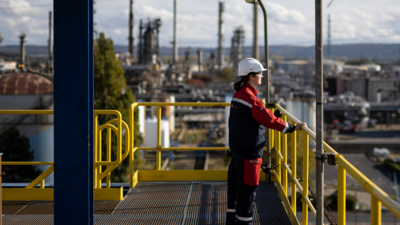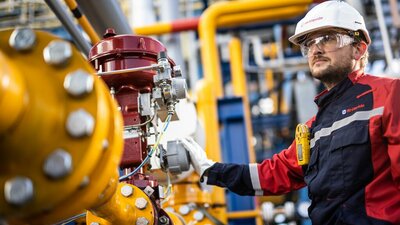Aviation is responsible for 2% of CO2 emissions and is at the heart of ecological issues. For aircraft as well as for airports, hydrogen could help cut emissions by 50% by 2050. Present across the entire hydrogen value chain, Air Liquide is using its technical and industrial expertise in hydrogen to help decarbonize aviation from the ground to the air. Learn how.
Hydrogen can be used for many applications in and around the airport
Low-carbon hydrogen is produced in gaseous form, particularly by using renewable energies for water electrolysis, as is already the case at our Bécancour site in Quebec. The numerous pipelines deployed by Air Liquide will soon mean that it can be transported in large quantities to a liquefier located near each airport. Thanks to its expertise spanning more than 50 years in the aerospace industry and extreme cryogenics, Air Liquide can use its experience in liquid hydrogen to serve airport ecosystems. Once liquefied, it is transferred to storage containers. Trucks can then fill up their tanks and carry out logistics, such as refueling on the tarmac.
The airport ecosystem
Once available at the airport, liquefied hydrogen is used for many purposes, including ground logistics: baggage tractors, forklifts, pods, super tugs, shuttle buses, etc. For example, at Seoul-Incheon International Airport, Air Liquide provides recharging stations for airport vehicle fleets with filling times of under 5 minutes. The environmental impact of all these vehicles is considerably reduced by using hydrogen to power them. Finally, thanks to high-performance trucks capable of storing up to 300 liters of liquid hydrogen, refueling can be done directly on the tarmac in a few minutes. One of the Group's projects is the winner of the AMI "H2 Hub Airport" to develop an airport hydrogen industry.
Aboard the aircraft
Aboard the aircraft, hydrogen can be used to power all the flight and communication systems in the cockpit, while ensuring passenger comfort by powering lighting, heating and all on-board services, including catering and refrigeration. In the future, it could be used for propulsion – either by direct combustion or by powering a fuel cell. When used in fuel cells, hydrogen combines with oxygen from the air to produce electricity with only water as a byproduct. The first hydrogen-powered commercial aircraft has been announced by Airbus for 2035. To best prepare for its arrival and contribute to the emergence of an innovative and strategic French sector, Air Liquide has partnered with Airbus and the ADP Group in June 2021.
With an already well-established presence in many business areas, Air Liquide is ideally positioned to develop synergies between mobility applications. This is in large part thanks to infrastructure that serves the entire airport infrastructure: taxi stands, bus terminals and train stations for local or long-distance transportation. This complementarity of infrastructure uses is a major lever for making low-carbon hydrogen accessible.







